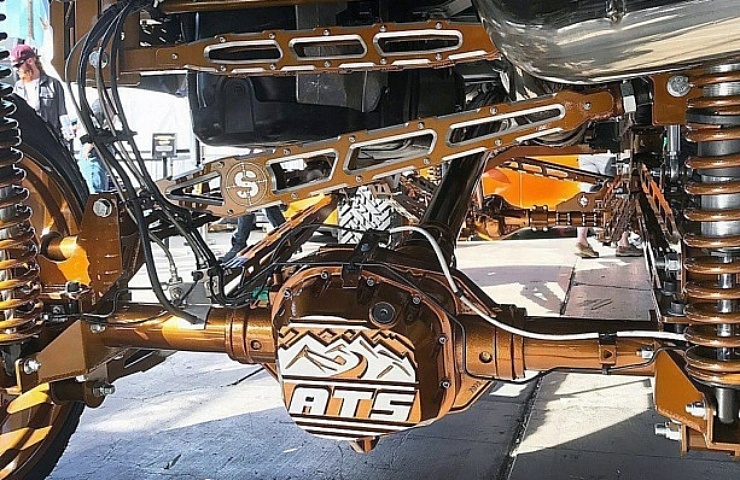Contents
It’s a fact: Suspension parts wear out over time. Perhaps your shocks aren’t as responsive as they once were. Bushings can lose their resiliency, and metal pieces break or lose their tension. There are common signs of a bad suspension, such as the car pulling to one side or a bouncy ride.
Instead of replacing just one component, it usually saves time and money to replace all the parts that come in a single suspension kit.
Why not replace a single item? Because a suspension is an entire system. Any single new part affects every other component. For example, you might add a new strut only to find an older bushing wearing out soon after the change. Besides, it’s usually easier to upgrade the entire system in one project—while the parts are accessible.
With a replacement kit, all the parts are designed to work together for your specific vehicle. They will fit in the existing mounting holes, so there’s no need to drill new holes or weld things in place. With a full suspension kit, you also save the hassle of contacting different vendors, verifying specifications, waiting on shipping, and hoping everything eventually comes together.
Custom Suspension Kits
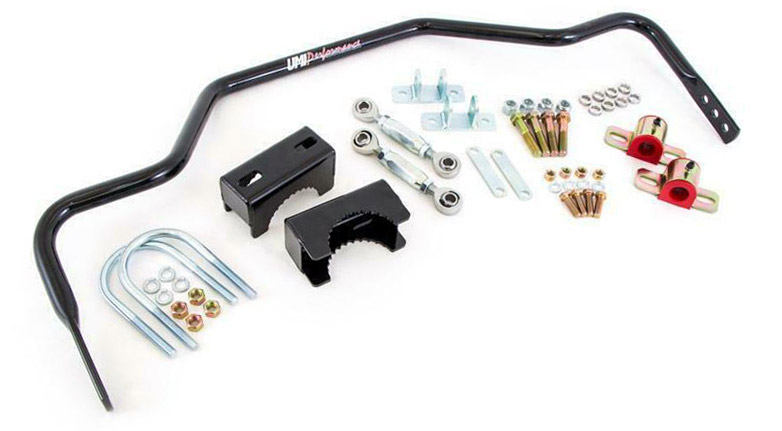
A suspension kit should include all the necessary structural pieces.
There is no one-size-fits-all solution for a new suspension. However, a suspension kit should include all the necessary structural pieces: mounting hardware, bushings, and shocks or springs.
Vendors offer kits for a general suspension upgrade—and for those wanting special features, such as super-duty shock absorbers or a lift kit. These are popular types of suspension kits on eBay:
One drawback of using a kit is that it can limit some of your choices. For example, if you have your heart set on a specific brand of coilover shocks, then you might need to collect your parts in a piecemeal fashion.
Regardless, the terminology can get confusing. What’s the difference between a straight axle, twin I beam, Quadra link, and four-link suspension? You don’t need all the answers, but it’s a good idea to get familiar with the most popular types of suspension before you start shopping.
Front Suspension Kits
Double Wishbone
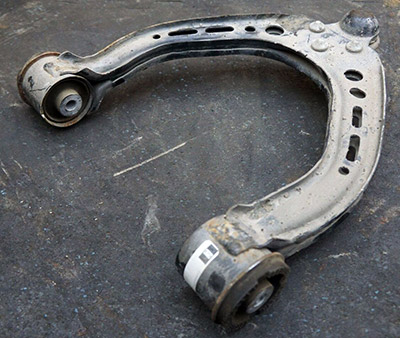
The wishbone structure helps provide a smooth ride in classic cars of the 1940s and 1950s.
The double-wishbone suspension was fairly standard from the mid-1930s until the 1970s, especially in rear-wheel-drive cars. The wishbone or A-shaped support is featured above and below the wheel hub. It’s connected with a knuckle.
A coil spring is used between the two wishbones to soften the ride. The double-wishbone is lighter than a beam suspension but more complicated in design.
A double-wishbone works well for people who want a period-correct restoration but are willing to sacrifice the smoothest ride. They typical are engineered to keep the wheels firmly planted to the ground but at the sacrifice of some ride quality.
Dual Beam
As the name implies, with a dual beam, each wheel is directly linked only to one wheel, so they are independent. Ford trucks became famous for their Twin I-Beam system, a variation of the dual beam. This setup aims to maximize durability. But the ability to adjust your wheels by caster, camber and toe is limited. It can be difficult to dial in your ride for a specific driving style.
Macpherson Strut Suspension
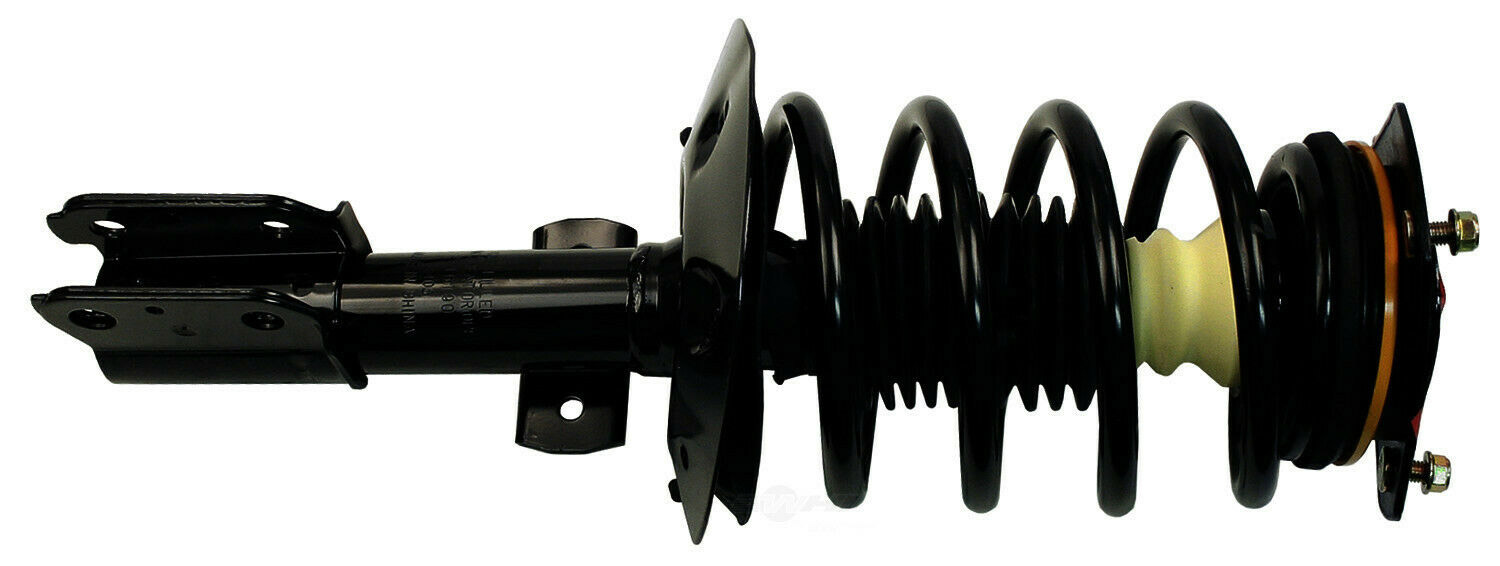
The Macpherson Strut includes both a coil spring and a damper-shock absorber to control the ride.
This lightweight independent suspension became popular with front-wheel drive vehicles of the 1970s. The strut—consisting of a spring and shock absorber (or damper)—is mounted at the steering knuckle by the wheel hub and an upper-body structure. This helps to absorb the road changes and keep each wheel firmly planted on the ground.
If you want the most room in the engine compartment along with a smooth ride, then consider a Macpherson Strut. Because the spring and damper usually come as one setup, you lose the option to optimize the ride to your exact preference.
Solid Beam

Many antique cars ride on a solid-beam suspension.
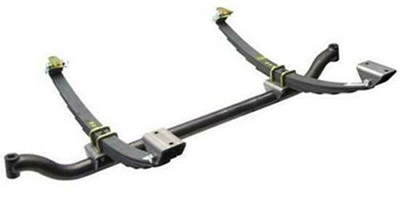
This straight axle is simple. It’s perfect for the drag strip.
A solid-beam suspension joins two wheels. Early cars, like the Model T, used this simple design. Typically, some leaf springs were placed to soften the ride. These are also called “dependent” suspensions because one wheel’s impact is transmitted to the opposite wheel.
A solid beam takes the form of a “straight axle” for dragsters. So, for the gasser look, go with a solid beam and the stiff ride it provides. But expect a relatively stiff ride.
Rear Suspension Kits
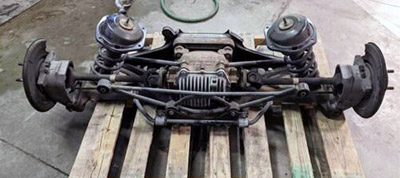
This independent rear suspension is popular based on both looks and ride quality.
Independent Rear Suspension
With an independent suspension, each rear wheel has a separate spring and shock combo. The drivetrain is connected to the axles to move the wheels. Jaguar popularized this design. Hotrodders adapted the design for their use.
Beyond the association with Jaguar, an independent rear suspension provides a noticeable improvement in handling. Corvettes started offering this type of suspension in 1963. An IRS is configurable but adds complexity. It needs to be installed with extra care.
Live Axle
A live axle suspension is similar to a straight axle. But it connects to the drivetrain via the differential to move the wheels. These are often found in buses, trucks, and some heavy-duty SUVs. A live axle is only used where a stiff rear end is desired for additional weight capacity. A work truck is a good application. However, movement on one rear wheel will be transmitted to the other wheel. The result can be a bouncy ride.
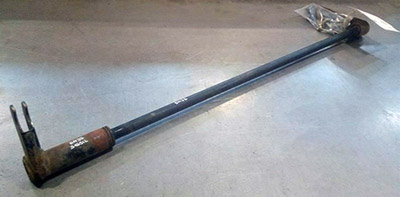
When properly mounted, a torsion bar twists as the suspension experiences a change in the road or wheel geometry.
Torsion Bar
With a torsion bar suspension setup, the system uses trailing arms or bars linked to a cross member. Torsion is another word for twisting. Hence, the torsion bar twists as the wheel move. The trailing arms are also aptly named because they extend to the back of the car from the wheels. The lower control arm connects to the torsion bar, which acts as a spring.
The simple design allows for more room around the suspension pieces and is often found in today’s vehicles. Owners can easily adjust torsion bars to change a car’s ride height, making it ideal for an enthusiast who wants to fine-tune the ride after it’s broken in. Owners might need a new torsion key to make the correct adjustment.
Shopping Tips for Suspension Kits
After you decide on the type of suspension kits, consider these three tips before making a selection:
- The suspension kit has to work for your year, make, and model. Use those terms when searching on eBay for a kit—and confirm fitment with the seller.
- Talk to others who have swapped out to a similar suspension and visit online forums. Collect views, opinions, and reviews before making a purchase.
- Independent suspensions are complex and typically cost more. But they offer a smoother ride, compared to a dependent suspension, since each wheel can go over bumps and potholes without impacting the other three wheels.
- Many vendors have enough confidence in their components to offer a long-term or lifetime warranty. They probably don’t provide any guarantees on the actual ride comfort, but they will replace the part if a piece breaks.
- If a suspension kit includes an adjustable coilovers, not only are you getting modern technology but the option of tweaking the system to meet your needs. Weekend racers often change settings for the track and then switch back to a more comfortable setting for daily driving.
Also read these:

